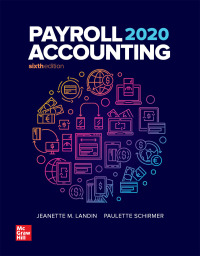Below is an Unadjusted Income Statement and an Unadjusted Balance Sheet for the first year of a hypothetical company whose year ended December 31, 2021. Additional information is below to allow you to prepare both an Adjusted Income Statement and an Adjusted Balance sheet. The information in (3) through (7) requires you to make decisions under the assumption that you are either a conservative or an aggressive manager. So the first thing you must do is decide to be either a conservative manager (report the lowest net income (highest expenses)) so that you don't overstate the financial health of the company or an aggressive manager (report the highest net income (lowest expenses)) so that you can get rewarded for good performance. Unadjusted INCOME STATEMENT year ended December 31, 2021 2,900,000 2,900,000 348,000 Sales Revenue Cost of Goods Sold Gross Profit Operating expenses Insurance expense Uncollectible accounts expense Depreciation expense Warranty expense Amortization expense/patent impairment loss Income from operations Non-operating expenses: Interest expense Net income before taxes Taxes (21% combined federal and state Taxes) Net Income 2,552,000 2,552,000 535,920 2,016,080 Unadjusted BALANCE SHEET at December 31, 2021 ASSETS Current Assets Cash Accounts Receivable (less allow for uncollectible Note Receivable Inventory Prepaid Insurance Total Current Assets 15,000 321,000 100,000 2,320,000 14,000 2,770,000 Long-Term Assets Property, plant and Equipment (less accum. Depr Patent T Total Long-term Assets TOTAL ASSETS 860,000 5,000 865,000 3,635,000 29,000 LIABILITIES Current Liabilities Accounts Payable Interest Payable Warranty Liability Income Tax Payable Total Current Liabilities 535,920 564,920 Long-term note payable Total Liabilities 100,000 664,920 STOCKHOLDERS' EQUITY Common Stock, No Par Retained Earnings Total Stockholders' Equity TOTAL LIABILITIES AND STOCKHOLDER'S EQUITY 954,000 2,016,080 2,970,080 3,635,000 Below is additional information. The first part provides you with information to adjust the financial statements to correct them (in other words, whether you are an aggressive or a conservative manager you would need to fix the financial statements in order for them to be in conformity with GAAP): 1) Prepaid Insurance was paid on January 1, 2021. The policy offers coverage for two years. 2) A Note Payable for $100,000 was obtained on September 1, 2021. The interest rate is 8%. All principal and interest are due on September 1, 2023. The second part provides you with information to adjust the financial statements based on flexibility within GAAP (the answer will vary depending upon whether you are an aggressive or a conservative manager): 3) The gross amount of Accounts Receivable totaled $321,000. (The firm's credit policy requires payment within 60 days). Industry guidelines indicate umcollectible accounts are generally in the range of 1% to 12% of the ending accounts receivable balance. (Note that management often sets percentages based on an aging schedule, not just on the total accounts receivable balance, but for ease of presenting solutions we will use these percentages for total accounts receivable balance). 4) Most products sold include a one-year warranty. Industry guidelines indicate warranty costs represent about 1-3% of sales revenue. Therefore a warranty liability and expense (to match against the sales revenue already recorded must be made). You can use the $2,900,000 unadjusted balance in sales revenue to make this entry. 5) The company purchased a patent for $5,000 on January 1, 2021 with a remaining legal life of 10 years. However, estimated net cash flows each year, over the next 10 years, are on average $500 per year. The incremental borrowing rate used to discount these cash flows to present value should be 8% a year. The present value is therefore, $500 (PVIFA, n=10, 3=8) = $500 (6.7101) = $3,355. Management is trying to decide if they are going to write down the impairment in 2021 or 2022. 6) Inventory costs are as follows: An entry needs to be made to decrease the inventory (asset amount) on the Balance Sheet and to increase the cost of goods sold (expense account) on the Income Statement using either LIFO or FIFO (two extremes). Units Unit price Purchase Date 1/1/21 3/1/21 5/1/21 8/1/21 10/1/21 12/1/21 100.000 1.78 100,000 250 120,000 2.50 150.000 2.70 170.000 3.10 200.000 3.30 840,000 788 000 52.000 Total price 178,000 250.000 300,000 405,000 527.000 660.000 2.320,000 Units sold Units left 7) The company uses Straight-Line Depreciation for its Plant and Equipment. Plant and Equipment costs consist of the following: Building 710,000 (range 30 to 40 years) Furniture 130,000 (range 10 to 20 years) Computers 20,000 (range 2 to 5 years) TOTAL 860,000 NOTE - AFTER YOU ADJUST THE FINANCIAL STATEMENTS FOR THE ABOVE 7 ENTRIES, you ALSO WILL NEED TO ADJUST THE INCOME TAX EXPENSE AMOUNT AND THE INCOME TAXES PAYABLE AMOUNT BASED ON YOUR NEW ADJUSTED NET INCOME NUMBER










